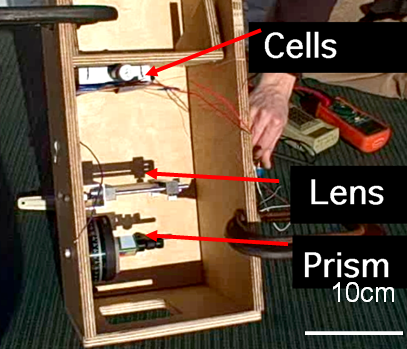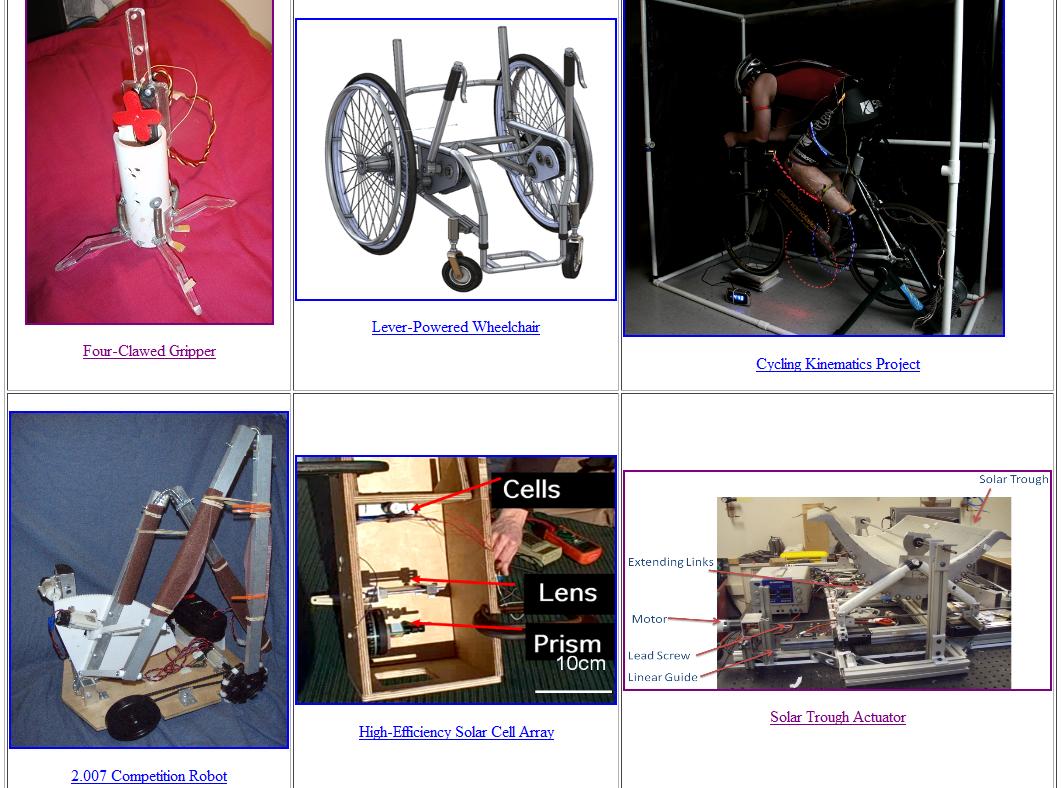
High-efficiency solar collector prototype.
I helped design and build a new type of high-efficiency solar collector as part of a five-person group for the class 2.626 Photovoltaics. A solar cell is optimized for a certain band of light, and most solar panels are made up of just one type of solar cell. Our solar collector splits the incoming light onto multiple solar cells, each optimized for a different bandwidth of light. Thus less incoming energy is wasted.
Abstract from final report
There are three distinct processes that could occur as an incident photon of energy hυ encounters a solar cell made with a material with a band gap of EG. Assuming that the photon is not reflected away, it will either be absorbed by the solar cell to generate an excited electron-hole pair (if hυ is greater than or equal to EG) or transmitted through the device (if hυ is less than EG). Furthermore, if hυ is strictly greater than EG, the excited electron will relax, giving up an amount of energy equal to hυ-EG (this is the process of thermalization).
The useable work that is extracted from the incident sunlight is thus limited by partial absorption and thermalization effects, which in practice results in low efficiencies (compared to other industries), normalized to the incident power flux. However, if a solar cell were to face a narrower band of wavelengths present in incident light, the non absorption and thermalization losses could be reduced, naturally increasing its efficiency.
One way to implement this is to stack solar cells of different band gaps on top of each other in order of increasing band gap (highest on top). The light gets absorbed in stages, minimizing both loss mechanisms. However, when integrated in a device, the current is limited by the lowest output current, which is a problem for maximum power tracking. A different approach would be to split the incident solar spectrum such that each wavelength falls in a different region of space and then to match the solar cells to those regions, in accordance with the band gaps of the materials. Furthermore, the light could be concentrated to reduce the area of the cell that is needed for the same power.
This report investigates the feasibility of this approach. A model is developed to determine the potential gains of this setup. The optical theory behind the splitting and the concentration of the solar spectrum is presented. The concept is implemented and tested and results are presented and discussed. Finally, effects of different band gaps and concentrations are investigated, and optimal configurations and their efficiencies are theoretically predicted.

Light rays split onto different solar panels

Theoretical spectral splitting and position of solar cells. Each different solar cell has a different energy bandgap.

Return to Design Page Home |



